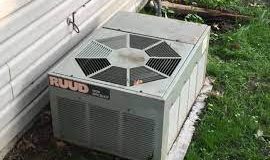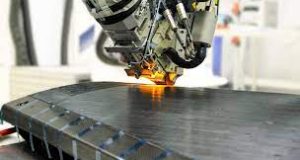Electrical problems are dangerous and can cause serious damage to your home and appliances. They can also lead to higher electricity bills and flickering lights. Electrical troubleshooting by an electrical repair service can examine the behavior or operation of an electrical circuit that isn’t working properly to identify the problem’s source. Finding the defective electrical component(s) and fixing the circuit are the next steps in troubleshooting.
Troubleshooting Electrical Problems
The first step in troubleshooting electrical and power problems is determining the cause. The goal is to prevent the problem from happening again. The problem could be a simple circuit breaker fault, or it could be multiple issues. Calling electrical repair service Fort Smith, AR, to diagnose the problem and determine the best course of action is important.
To perform electrical system troubleshooting, you need a multimeter to measure the current flowing through the circuit. Using a multimeter that can read DC and AC voltages, resistance, and the operating current is important. Another handy device is a clip-on ammeter.
The next step is to identify which circuits are energized. If you suspect one of the energized circuits, you should turn off the electricity before performing any work. It is also important to label all cables positively.
Fixing Flickering Lights
Flickering lights are usually an indication of a larger electrical problem. A faulty central electrical panel could be the culprit, or loss of connections can cause the lights to flicker. Either way, you should have a licensed electrician inspect the electrical system.
Flickering lights are often caused by loose electrical connections, which could result in a fire. First, check for loose wires around the house and speak with neighbors. You may have a problem with your power grid if you cannot locate any loose cables.
Flickering lights can indicate various problems, ranging from faulty circuits to sensory overload. Before calling an electrician, measure the voltage in your home using a voltmeter. Ideally, your home’s voltage should be 115 or higher, so a significant deviation will need professional attention. Flickering lights can also be caused by other homes in your neighborhood turning on their electric equipment. If you suspect this is a problem, contact your local municipal energy company.
Faulty light bulbs can also cause flickering lights. A loose bulb or plug in an outlet can cause the light to flicker. Another common cause is a faulty switch. In some cases, a replacement switch can solve the problem.
Fixing Tripped Circuit Breakers
Tripped circuit breakers can be a serious problem and need immediate attention. They can be tripped due to some things, including too many appliances plugged into one circuit, or they can occur when an electrical outlet is overloaded. You can fix this problem by unplugging appliances, flipping the breaker, or using just one appliance at a time.
First, if you experience a power outage, the likely cause is a tripped circuit breaker. It can happen once, or it can happen repeatedly. If it’s a recurring problem, you may have a bigger issue. To troubleshoot tripped circuit breakers, you should find out where the breaker is located.
A tripped circuit breaker can also occur due to faulty wiring. It could cause a circuit to trip continuously and cause electrical shocks when powering an appliance. If you’re not certain what is causing the problem, call a professional electrician to help you. It would help if you never attempted to work with live wires without the assistance of a trained electrician.
Fixing Backstabbed Wires
Backstabbed wires are common electrical problems, and fixing them can be quick and easy. A backstabbed wire is a loose connection that can rob an outlet of its power and spark a fire if it comes into contact with flammable materials. It is best to call a professional to diagnose the problem. Backstabbed wires can be detected manually, but a service technician should handle them for safety.
You can unscrew the outlet plate and receptacle to check for backstabbed wires. Look for wires that are curled around the screws. If they are, you’ll need to remove them and tighten them in their proper locations.
Backstabbed wires can be a sign of improper wiring. Although this is not a code violation, it can lead to electrical problems. Moreover, loose wires can also spark a fire. If you suspect a backstabbed wire, remove the receptacle from its outlet box and screw down the loose wire to the screw terminals.
 Blog For Noob Random thought of a Noob Blogger
Blog For Noob Random thought of a Noob Blogger









